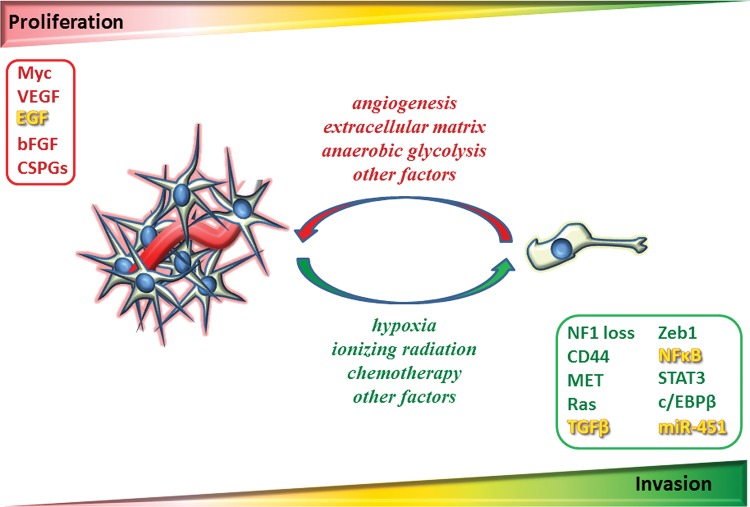Fig. 2.
Diagram of proliferation and invasion and the key pathways. Progression of glioblastoma is determined by 2 key factors: cell proliferation rate and speed of cell migration. In theory, proliferation (illustrated in red) and invasion (illustrated in green) are temporally, mutually exclusive phenotypes. As such, the highly invasive glioma cells have a lower proliferative rate; in turn, the highly proliferative cells are less invasive. At a macroscopic level, cell-cell interactions and microenvironmental factors both play important roles in regulating the phenotypic switching. While ionizing radiation, chemotherapy, and hypoxia can force tumor cells (eg, GSCs) into a “go” phenotype, angiogenesis, tumor ECM, and anaerobic glycolysis promote repopulation of tumor cells and formation of recurrent tumors. The dynamic phenotypic switching between proliferative and migratory states of individual cells determines the overall phenotype of tumor growth. The key pathways associated with proliferation and invasion are outlined. Note that there are pathways regulating both proliferation and invasion (illustrated in yellow). bFGF, basic fibroblast growth factor; CSPGs, chondroitin sulfate proteoglycans; NF1, neurofibromatosis type 1.

